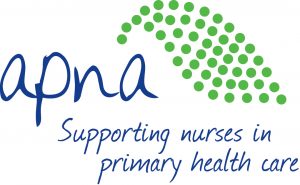
Low Vitamin D
Georgia Paxton, Gillian Singleton
Recommendations
- Check vitamin D status as part of initial health assessment if there are one or more risk factors for low vitamin D.
- People with low vitamin D should be treated to restore their levels to the normal range with either daily dosing or high dose therapy, ensuring adequate calcium intake, paired with advice about sun exposure and self-management.
Overview
Low vitamin D is a public health issue across the lifespan, and is prevalent in refugee and asylum seeker populations in Australia. Vitamin D is essential for bone and muscle health, and there is increasing evidence of an association between vitamin D status and a range of non-bone health outcomes, despite a relative lack of robust randomised controlled supplementation trials.
Vitamin D refers to both D3 (cholecalciferol) and D2 (ergocalciferol). D3 is produced in the skin through the action of ultraviolet-B radiation (UVB) in sunlight; it is also the most common form in food and the form available in supplements. Small amounts of D2 are found in some plant- based foods. Vitamin D undergoes stepwise hydroxylation in the liver (forming 25OHD), then319 kidneys (forming the active 1,25(OH)2D). 25OHD is the major circulating form and index of vitamin D input, and is used to assess vitamin D status. Normal vitamin D levels are defined as >50 nmol/L at all ages, and during pregnancy and lactation. This level may need to be 10–20nmol/L higher at the end of summer to maintain levels >50nmol/L over winter and spring.320,321
Sunlight exposure is the most important source of vitamin D, and is estimated to provide over 90% of vitamin D in humans.319 Skin synthesis varies with skin colour, ultraviolet radiation (UVR) protection (e.g. clothing, shade, sunscreen), time spent outside, latitude, season, time of day, and atmospheric conditions.322–327 Adults with dark skin are likely to require three to six times the amount of UVB (compared to someone with light skin) to produce similar amounts of vitamin D, as the skin pigment, melanin, absorbs UVB.328 There are no data on skin synthesis in children.321 Diet is a poor source of vitamin D for most Australians (limited amounts in some fatty fish, liver, eggs).320 Neonatal vitamin D levels reflect maternal vitamin D status, and cord blood levels are approximately 65% of maternal levels.329 Infants also depend on skin synthesis, as breast milk, despite its other benefits, contains very little vitamin D.330
Risk factors for low vitamin D can therefore be divided as follows:321
- Lack of skin exposure to sunlight, e.g. lifestyle factors, chronic illness, covering clothing, southerly latitude
- Dark skin (Fitzpatrick types V or VI)331
- Conditions affecting vitamin D metabolism and storage (including obesity)
- In infants – maternal vitamin D deficiency, and exclusive breastfeeding combined with at least one other risk factor.
People from a refugee-like background frequently have risk factors for low vitamin D, including dark skin, covering clothing and reduced exposure to sunlight through migration to temperate latitudes.
Available prevalence data show 61–100% in African refugees in Melbourne, Adelaide and Sydney have low vitamin D (<50nmol/L).45,155,255,332,333 Low vitamin D is also common in other refugee cohorts wearing covering clothing (Afghani, Iraqi; prevalence 50–70%),71,156 and has been found in 33% of Karen refugees.43 Three Australian case series of rickets found 96–98% of children were migrants or born to migrant parents, and almost all children in these series had ethno-cultural risk factors (dark skin, maternal covering clothing).334–336 See prevalence tables for more information.
Vitamin D screening321,337 is recommended in people with one or more risk factors for low vitamin D – and is therefore recommended as part of initial refugee and asylum seeker health screening where risk factors are present.
People with low vitamin D should be treated to restore their levels to the normal range with either daily dosing or high dose therapy, 321,337 ensuring adequate calcium intake paired with advice about sun exposure and self-management. People with ongoing risk factors should be aware this is a lifelong health issue, requiring ongoing monitoring and management.
History and Examination
History
- Non-specific bony and/or muscular pain; fatigue with exercise
- Irritability, delayed motor milestones (young children)
- Dairy intake, symptoms of low calcium (muscle cramps). Hypocalcaemic seizures are rare beyond 12 months of age
- Sunscreen use, time outside
- Previous vitamin D levels, previous/current treatment (especially with the increased availability of supplementation)
- Family understanding.
Examination
- Rickets — deformity in growing bones due to failure of mineralisation of osteoid. Peak incidence during infancy, although deformity reflects age/growth (and can be in any direction).338 Consider other causes if asymmetrical. Long bone deformity, splaying (wrists, ankles), bossing, delayed fontanelle closure (normally closed by 18 months, 100% by 23-26 months), rachitic rosary
- Other — delayed dentition (no teeth by 9 months, no molars by 14 months),338 enamel hypoplasia.339
Investigations
Screen people with serum Vitamin D if with one or more risk factors for low vitamin D.321,337
- In adults — measure 25OHD
- In children — measure 25OHD, calcium, phosphate and ALP. Also measure parathyroid hormone (PTH) in those with low calcium intake, symptoms/signs or multiple risk factors.
In recent arrivals: if the initial vitamin D level is normal, repeat at the end of the first winter in Australia. Levels at the start and end of winter can be useful to make a clinical judgement on frequency of dosing.
From 2014, Vitamin D testing only attracts a Medicare benefit if the patient meets certain criteria (these include dark skin and severe lack of sun exposure for cultural/residential/medical reasons, children <16years with rickets, sibling <16 years with vitamin D deficiency, and infants whose mothers have vitamin D deficiency) – these criteria need to be specified on test requests.
Management and Referral
People with low vitamin D should be treated to restore their levels to the normal range with either daily dosing or high dose therapy. 321,337 D3 is the only form currently available in supplements.
Adults
- Mild deficiency (30–49nmol/L) 1000–2000IU daily for 3 months
- Moderate to severe deficiency (<30nmol/L) 3000–5000IU daily for 6–12 weeks, then 1000– 2000IU daily for a further 6–12 weeks (or 50,000IU monthly for 3–6 months).
Children
- There is inadequate evidence to support high dose therapy in children age<3 months, or during pregnancy or lactation321
- Mild deficiency (30–49nmol/L) age ≥1 year 1000-2000IU daily for 3 months (or high dose 150,000IU stat in age 1–18 years)
- Moderate to severe deficiency (< 30nmol/L) age ≥1 year 1000-2000IU daily for 6 months or 3000-4000 IU daily for 6–12 weeks, (or high dose 150,000IU stat and repeat in 6 weeks in age 1–18 years).
Ensure adequate calcium intake. Calcium supplements may be needed if dietary intake is poor (<2 serves dairy daily). See recommended daily intake of calcium for age.
Treatment should be paired with health education and advice about sun protection/sun exposure – encouraging outside activity. People with dark skin can tolerate intermittent sun exposure without sunscreen. Hats/sunglasses are still recommended.
Follow-up bloods at 3 months (earlier in infants with moderate – severe deficiency – at 1 month321). Follow-up bloods should include 25OHD, Ca, PO4 and ALP. Further management may be required if 25OHD is still low.
People with ongoing risk factors for low vitamin D need to understand this is a lifelong health issue. They will require ongoing monitoring, with annual testing and a plan to maintain vitamin D and calcium status through behavioural change where possible, and supplementation where this is inadequate. They may require high dose vitamin D more than once a year. Avoid very frequent testing.
Ongoing vitamin D intake to prevent deficiency
- Infants and children: 400-600IU daily in the absence of sun exposure – in those with ongoing risk factors it is useful to suggest daily supplements over the winter months or consider high dose vitamin D (150,000IU oral) each 6–12 months depending on levels and risk factor profile
- Adults: 600 IU daily for age <70 years, 800IU daily for those aged ≥70 years.
Considerations in Pregnancy and Breastfeeding
Women with one or more risk factors for low vitamin D should have their serum 25OHD levels measured at the first antenatal visit. Women with low levels should be treated to achieve 25OHD levels >50nmol/L
- 25OHD levels between 30–49nmol/L – 1000IU vitamin D3 daily
- 25OHD levels <30nmol/L – 2000IU vitamin D3 daily.
Testing should be repeated at 28 weeks’ gestation; in women whose 25OHD levels have corrected to >50nmol/L, a minimum of 600IU vitamin D3 daily should be given throughout the remainder of pregnancy. There is inadequate evidence to support high dose vitamin D during pregnancy.
Lactation:321 breastfeeding women with low 25OHD levels should be started on 2000IU vitamin D3 daily. There is inadequate evidence to support high dose vitamin D during lactation.
Considerations for Children
Screening and treatment for children also follows the guidelines above.
Other considerations:
- Dosing tables are available for children, including infants
- In exclusively breastfed infants with at least one other risk factor it is usually more practical to start supplements without screening with 400IU daily for at least the first 12 months of life
- Babies on full formula feeds should receive adequate vitamin D from this source. There is inadequate evidence to support high dose vitamin D in children age 3 months
- Children with rickets require the above tests (25OHD, Ca, PO , ALP) as well as UEC, X-ray wrist, clinical photos. Also consider Mg, 1,25(OH)2D and urinary Ca/PO4/Creatinine
- Clinical photography is useful to monitor bony deformity in children (nutritional rickets usually corrects after treatment of low vitamin D provided the child has adequate calcium and phosphate intake).
Admission/specialist referral
Symptomatic rickets/hypocalcaemia (including tetany, stridor, seizures) requires hospital admission for intravenous calcium infusion with cardiac monitoring and vitamin D. Do not give high dose Vitamin D in the outpatient setting to this group
Children with clinical rickets or abnormal serum calcium require specialist assessment.




